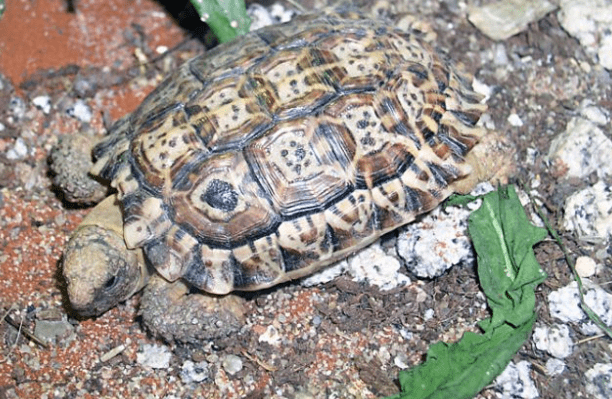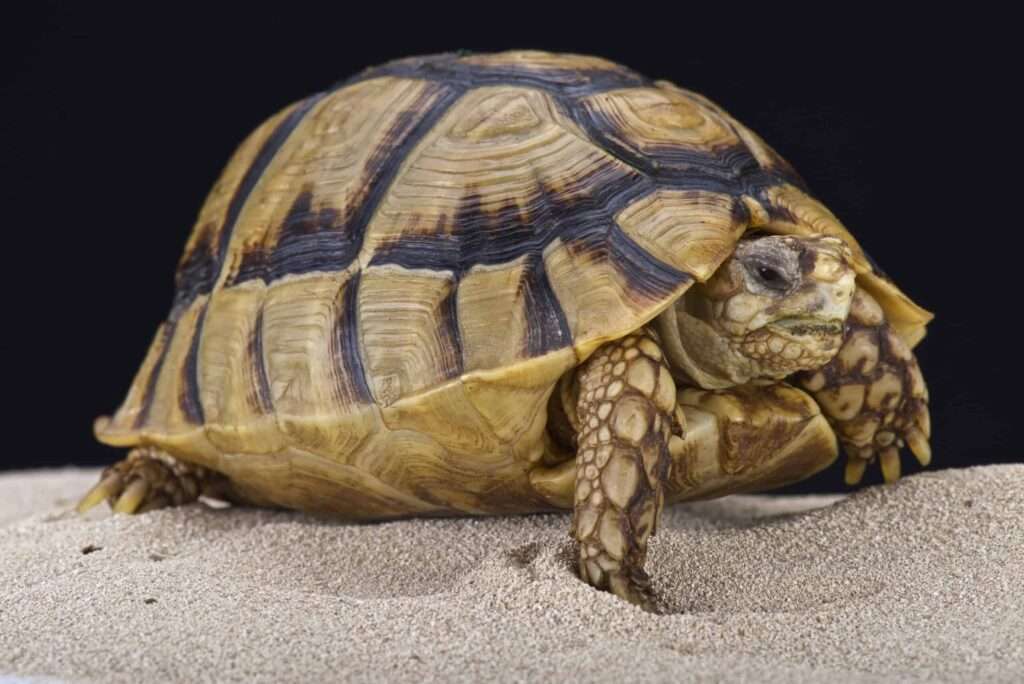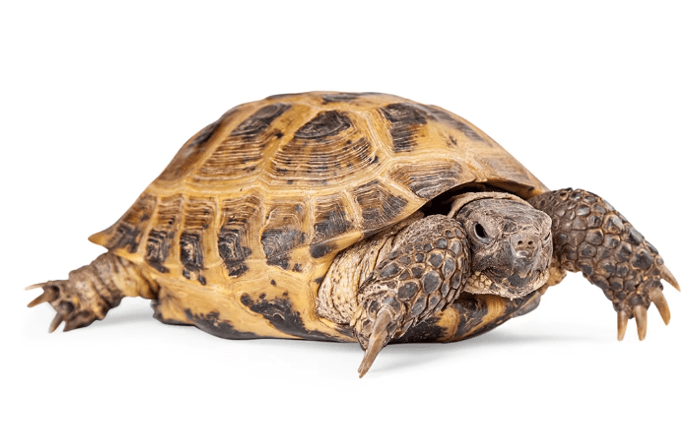
Description
The thick yellow-brown to golden skin and brownish shell of the African spurred tortoise in the desert provide effective camouflage. Its broad, oval carapace features distinct grooves at the front and back margins as well as distinct growth rings on each scute, which get more distinct with maturity. The front of the forelimbs are covered in thick scales that overlap, and the two or three enormous conical spurs on the back of the thighs are what give the species its name.
Habitat
The southernmost portion of the Sahara is home to this tortoise, which may be found from Senegal and Mauritania through Chad, Mali, the Sudan, Ethiopia, and Eritrea. They can also be found in Niger and Somalia. They inhabit hot, arid regions with little to no access to water, from dry savannahs to the edges of the desert.
Behavior
From the moment they hatch, these tortoises are quite hostile towards one another. Males frequently engage in behaviors like ramming against each other and attempting to flip each other over. These tortoises are suited to burrowing and enjoy it. They are quite powerful and energetic for tortoises. Since they primarily rely on metabolic water and the moisture from food for their water needs, going inside a burrow when the weather is excessively hot or cold also helps them avoid becoming dehydrated. They spend hours in their burrows, flipping mud onto their backs whenever they come across it. They will spit and coat their forearms with saliva to help cool off if temperatures rise above 40 C. The hours between dusk and dawn are when they are most active, and they typically bask in the morning to warm up after a chilly night.

Keeping as Pet
Housing
The optimal environment for these giant tortoises is access to a sizable outside enclosure. They require a strong, two-foot-tall fence. In an outdoor cage, the fence should be extended underground at least a foot because they can burrow pretty efficiently. A doghouse or small shed can serve as shelter from the elements, and you can also include a muddy wallow for your turtle to urinate and soak in.
Due of their size, it can be impractical to keep adult sulcata tortoises indoors, but if you live in a colder climate, you will need to give them a warm environment. It may be a good idea to provide them with a heated outdoor shed or greenhouse where they may live during the cooler months. A room will probably need to be set aside for an adult sulcata if you decide to bring one inside.
Food and Water
Sulcata tortoises are grazing, herbivorous tortoises that require a diet high in fibre and low in protein. Giving them a variety of grasses and hays, which should make up at least 75% of their diet, as well as some edible weeds and flowers like dandelions, clover, endive, and cactus pads will help with this. Other lush green veggies in moderation are also acceptable. Avoid oxalate-rich foods including kale, spinach, mustard and beetroot greens, okra and spinach.
Every one to two days, you should give your tortoise a salad of different leafy greens and vegetables in addition to the grasses and weeds in its surroundings. Make sure you don’t apply insecticides around them. They will eat anything, so be aware of the plants that are growing there! Since this mostly relies on the age, size, and health of your tortoise, consult your veterinarian to make sure you’re providing the right type and quantity of food.
Many owners use a daily calcium-containing multivitamin supplement or supplement the vegetables with calcium powder once or twice a week (or as prescribed). Unless otherwise instructed by your veterinarian, avoid giving fruits, animal protein, or pet store pelleted tortoise foods to your pet. The majority of the water that turtles consume comes from their food, but you should also provide a shallow water dish in their habitat that you refill every day.
Many owners use a daily calcium-containing multivitamin supplement or supplement the vegetables with calcium powder once or twice a week (or as prescribed). Unless otherwise instructed by your veterinarian, avoid giving fruits, animal protein, or pet store pelleted tortoise foods to your pet. The majority of the water that turtles consume comes from their food, but you should also provide a shallow water dish in their habitat that you refill every day.
Table





